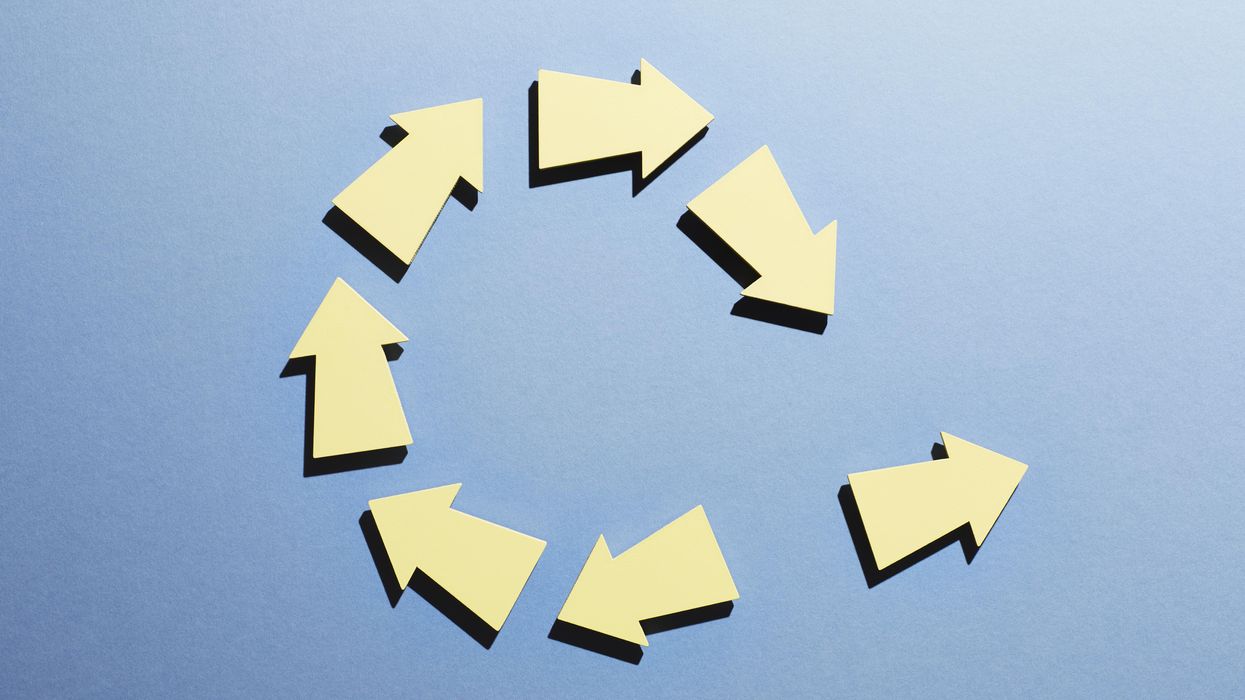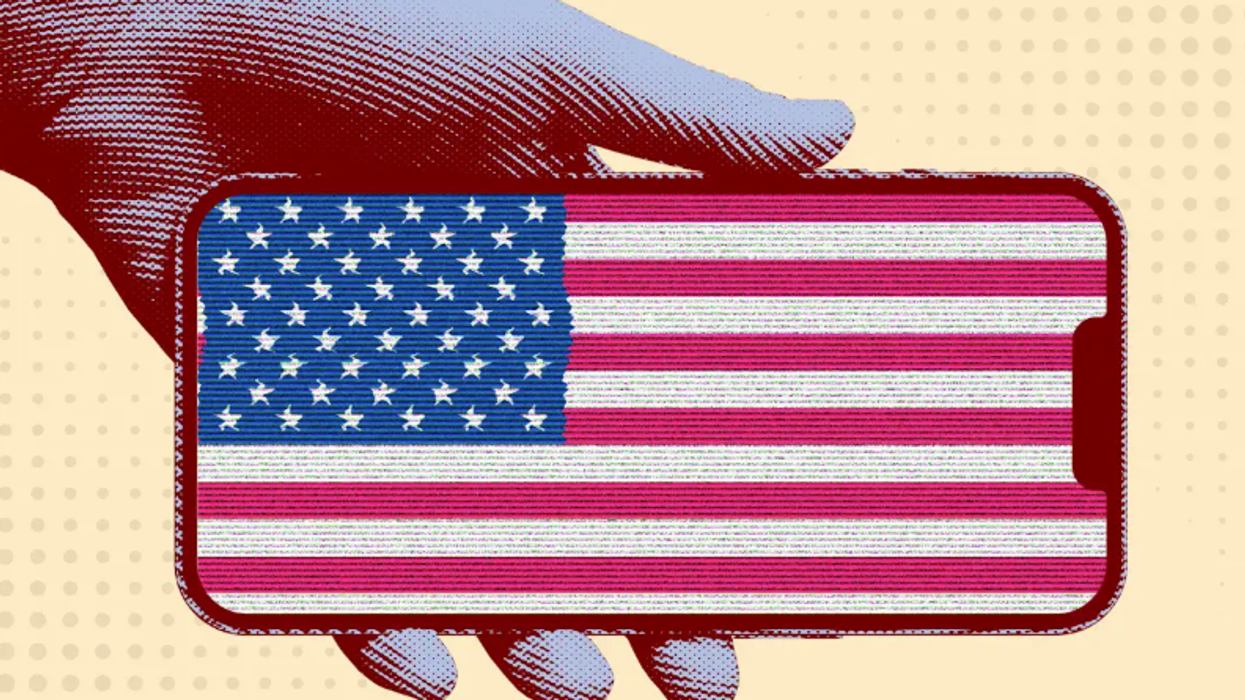Vines is the executive producer of the 2021 documentary “Dialogue Lab: America” and president/CEO of Ideos Institute.
With the midterm elections over, it is high time we all take a collective sigh of relief. Not that the work is over. In fact, with new leadership, shifting coalitions and renewed focus on the challenges our nation is still faced with, some of our greatest work lies before us. But how does a nation divided across almost everything begin to move forward together towards the kinds of systemic changes and big idea solutions required of us?
Sadly, the jury is still out on exactly how we go about bridging our seemingly unbridgeable divides, much less solutions our political parties will collectively rally behind.
However, one thing I do know is that if we continue to wait patiently for systems change to magically happen, change will certainly remain elusive. Advocacy and activism are incomplete methods of change. Many tout “systems change” as the new solution. But the language of systems change gives the “exhausted majority” of Americans a bit of a hall pass. This exhausted majority feel disconnected from the halls of power and/or powerless given the overwhelming size of the issues themselves.
This is largely why we remain immobilized in the face of issues long overdue for real and sustainable solutions. Major issues like racial injustice, poverty, climate change, voting rights, immigration, gun violence and mental health continue to plague us after generations of political promises. As each party tells us what we want to hear – that they can fix it – we’ve grown cynical. It is time to stop scapegoating particular parties or populations for these systemic failures. Our inability to transform our broken and dysfunctional systems is, in fact, a lack of transformation within the American people themselves. The problem isn’t only the system. The problem is also us, our mindsets and attraction to simple answers, conspiracy theories and other quick fixes. We need to try something new.
For instance, what if we broke down systems change into manageable steps that every American could see themselves participating within? We could transform ourselves and our system, together. To understand this distinction, we must first define what systems change is and how it’s different from other types of approaches.
First, systems change focuses on the addressing of causes, rather than symptoms of social, political and economic issues. It involves the adjusting or “transformation” of the policies, practices, power dynamics, social norms and mindsets that underlie the societal issue at stake. And, for its success, it requires the shared understanding, commitment and action by a diverse set of stakeholders, including those closest to and most affected by the problem. This last part is the people part. It’s not a mindset of “they need to change” but a new mindset of “we need to change” so a new system is supported by all stakeholders, because they helped design and implement it.
Catalyst 2030, a global movement of people and organizations committed to achieving the U.N. Sustainable Development Goals by 2030, outlines systems change in the following way:
Systems change is the shifting, reconfiguring, and transforming of:
- mind-sets, mental models, and paradigms,
- patterns, underlying structures, and ways of operating,
- dynamics and relationships,
in order to:
- address underlying root causes,
- deal with [ever-changing] complex, uncertain, and interconnected systems…,
- Solve big social issues,
through intentional process and design, purposeful interventions, and conscious, deliberate approaches such as…:
- growing the number of people who think and act systemically,
- enabling and supporting leaders with the power to convene systems,
- strengthening capacity and processes to engage,
- strategic, multi-stakeholder approaches coming together across systems,
- having an inner awareness of the whole,
with the outcome of creating, enduring and positively affecting:
- different behaviors and outcomes,
- resilient, lasting, and better results,
- building a bridge to a better tomorrow,
- increased systems of health,
- positive social change,
- just, sustainable, and compassionate societies, [and]
- a new normal, the emergence of a new system and a new reality.
This is the process of systems change.
It is more common to assume the who/what behind systems change is “them,” and resist any change reflexively. We push away any thought that we might be better served with a new system or new belief. Here, today, we invite you to consider that all systems are simply people coordinating together with shared understanding. These “stakeholders” for our multiple looming crises are all of us. There is no “them” to blame, only “us.”
This means that the transformation of broken, antiquated, dysfunctional systems starts with the transformation of actual people. You. Me. Us. In other words, if we are ever going to change the systems most in need of changing, our first and most important step is to begin the work of changing ourselves – our personal mindsets, patterns, paradigms and ways of operating. Changing ourselves is the first step. Only then, according to the process outlined above, will we have a chance at building a just, sustainable and compassionate society.
Yes, the work of systems change is hard. But I would bet large sums of money that the reason why we are so lacking in most areas is because the work of people change is even harder. It is always easier to point our fingers at the other side; the ones with the wrong answers, the evil plans, the destructive ideas. But as my grandmother always told me, “When you point a finger at someone else there are three pointing back at you.”
So, with my three fingers pointing squarely back at myself, I invite you to join me in the work of personal transformation. Join me in a process – as my October piece alludes to, the transformative process of seeing past political, social and cultural identities toward the human being in search of a better future – even if differently designed. This is the messiness of social capital building and the foundation for strong democracies made up of diverse people and perspectives. The kind of democracy we have been promoting globally for decades and now struggle to maintain at home. Yes, the world is watching.










 Despite signing a mortgage that pledged he would live in each house, Trump listed both homes as rentals. Palm Beach Daily News via Newspapers.com. Redactions by ProPublica.
Despite signing a mortgage that pledged he would live in each house, Trump listed both homes as rentals. Palm Beach Daily News via Newspapers.com. Redactions by ProPublica.
 In 1993, Trump signed a mortgage for a “Bermuda style” home in Palm Beach, pledging that it would be his principal residence. Just seven weeks later, he got another mortgage for a seven-bedroom, marble-floored neighboring property and attested that it too would be his principal residence. Obtained by ProPublica
In 1993, Trump signed a mortgage for a “Bermuda style” home in Palm Beach, pledging that it would be his principal residence. Just seven weeks later, he got another mortgage for a seven-bedroom, marble-floored neighboring property and attested that it too would be his principal residence. Obtained by ProPublica







